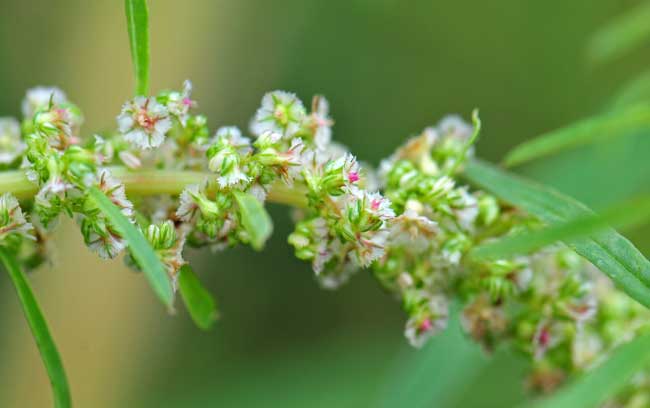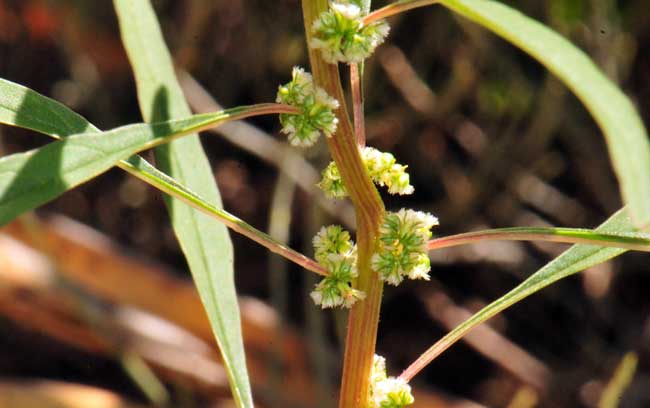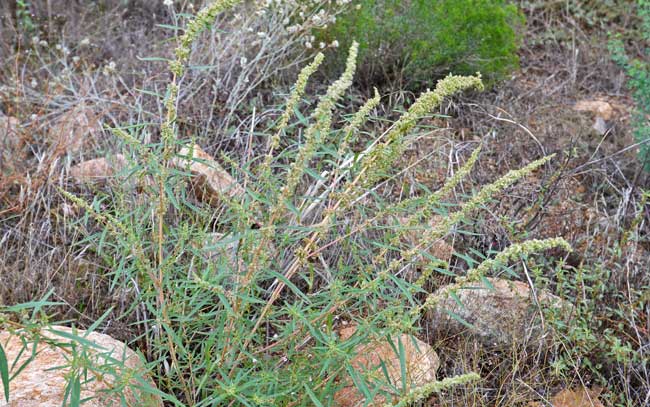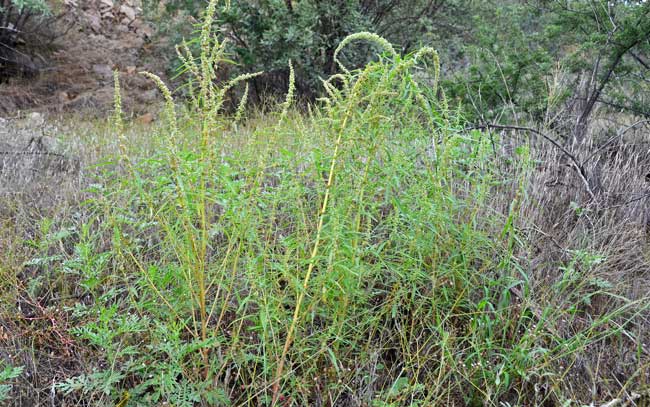Amaranthus fimbriatus, Fringed Amaranth




Scientific Name: Amaranthus fimbriatus
Common Name: Fringed Amaranth
Also Called: Pigweed, Blite and Fringed Pigweed (Spanish: Quelite, Bledo)
Family: Amaranthaceae, Pigweed Family
Synonyms: (Sarratia berlandieri var. fimbriata, Amaranthus fimbriatus var. denticulatus)
Status: Native
Duration: Annual
Size: Up to 2 feet.
Growth Form: Forb/herb; erect with a main stem and multiple lateral branches, bushy.
Leaves: Green; alternate, leaf blade narrow linear leaves.
Flower Color: White or whitish-green; flowers with sepals only, sepals fringed, flowers sessile in leaf axils and along lengthy often curving spike-like inflorescence, monecious or dioecious, seeds reddish to black.
Flowering Season: Summer and fall.
Elevation: 2,000 to 4,000 feet.
Habitat Preferences: Lower and upper deserts in sandy or gravelly washes and disturbed areas.
Recorded Range: In the southwestern United States Fringed Amaranth is found in CA, NV, UT, AZ, NM and TX. Also found in Baja California and northern Mexico. In Arizona it is found throughout most of the state.
North America & US County Distribution Map for Amaranthus fimbriatus.
U.S. Weed Information: No data available
Invasive/Noxious Weed Information: No data available
Wetland Indicator: No data available
Threatened/Endangered Information: No data available
Comments: Fringed Amaranth is a native weedy species that responds well and even thrives with moderate or heavy monsoon rainfall.
In Southwest Desert Flora also see: Prostrate Pigweed, Amaranthus albus and Carelessweed, Amaranthus palmeri.
Fringed Amaranth has ethno-botanical uses identified at Native American Ethnobotany, University of Michigan, Dearborn.

